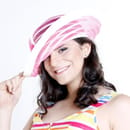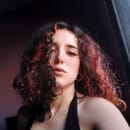“In a hole in the ground there lived a hobbit.” With this sentence, the book The Hobbit starts. Created by J. R. R. Tolkien, the journey of the hobbits and the One Ring, that continues in The Lord of the Rings books, is probably the most important example of fantasy literature from the 20th century. To build their stories, authors as Tolkien found out inspiration in many sources, going from personal experiences to old myths.

- Fantasy literature: what is it and what are the main types?
-
All of them used their ideas to conceive elements that do not exist in the real world. In fantasy books, a subgenre of fantastic literature – that includes scientific fiction and horror too-, magic is part of the characters’ daily-life and, because of that, does not need to be explained. Former fantasy books, as Alice in Wonderland (1865), of Lewis Carroll, and The Wonderful Magician of Oz (1900), of L. Frank Baum, were written in the end of the 19th and in the beginning of the 20th century.
Most of these stories are classified as high fantasy, because happen in a totally fictional world, that contains different sort of beings, such as elves, fairies, hobbits and dwarves, have its own history, geography, languages and way of operation. The alternative space can be completely independent from the real world or connected to it by some kind of portal. These books usually work with a clear fight between the powers of good and evil and with an epic feature, which means that the main character has to accomplish a very difficult task.
On the other hand, books considered part of the low fantasy genre are normally set in the real world, bringing fantastic elements to it, or in a fictional world very similar to ours. The low fantasy is divided in some subgenres. Percy Jackson & the Olympians, of Rick Riordan, is an example of urban fantasy, because is located in places that exist in the real world. Books whose plots include supernatural powers, magic beings and happens in alternative versions of ages before the 20th century are part of the historical fantasy genre and can be classified as low fantasy too. The word “low” does not refer to the quality of the book, but to the importance of the fantastic elements in the narrative.
These categories can be outgrown by the authors. Some books use features from more than one type of fantasy story and are hard to be classified. A song of ice and fire, of George R. R. Martin, takes place in an alternative world very similar to the Middle-Age United Kingdom. The characters must lead with difficult situations, but they usually walk in the borders of the moral rule. Harry Potter, the most well-known fantasy story of the current century, happens in a world very resembling to ours, but important places in the plot, such as Hogwarts and Hogsmeade, do not exist in the real universe (unfortunately).
- There and back again
-
John Ronald Reuel Tolkien is considered the father of modern fantasy literature and has inspired many other authors. Professor of English Language and Literature in Oxford University, his main achievement was employing the writing technique of the Realistic Romance, largely used in the 19th century, to tell stories based in old myths.
Beowulf, a poem written in anglo-saxon language between the 10th and the 11th centuries, had great influence on Tolkien. This epic narrative tells the journey of Beowulf, a hero who fights against several monsters, including a dragon that had a big treasure. Besides the similarity between this beast and Smaug, the dragon defeated in The Hobbit, many elements of Beowulf are seen in The Lord of the Rings. Orcs and ents, beings from the Middle-earth, were inspired in Beowulf’s creatures.
The Norse mythology had inspired Tolkien too. This can be seen in the correspondences between Gandalf and Odin, the Norse god. Both of them walk across the world as an old man, setting riddles and tasks for those who meet them; both have a great longevity, but are not immortal, and both sacrifice themselves and come back to life stronger than before. However, while Odin does that to reach power, Gandalf fights with the Balrog in the halls of Khazad-dûm to salve the members of the Fellowship of the Ring.
Besides, the premise of The Lord of the Rings might have been strongly influenced by the Nibelungenlied, a poem that address Norse and Germanic legends written in the 1200s. Some episodes of the poem tell about the Nibelungen, a people of dwarves whose king, Alberich, forged a magic and powerful ring in a deep cave of his own. Here, is possible to make a parallel with Tolkien’s One Ring and Gollum, that runs to a cave after finding this dangerous jewelry.
Tolkien’s personal experience is present in the books too. He was born in 1892, in Bloemfontein, South Africa, but moved to England when was three, living in Saherole, a village nearby the big city of Birmingham. The industrialization of the Shire that happens in the end of The Return of the King is a portrait of this conflict around industrialization and urbanization. Also, the Death Marshes and the Morannon, places in the territory of Sauron, the villain of The Lord of the Rings, were inspired on Tolkien’s experience during the World War I, especially in the Battle of Somme, 1916.
- Inside the wardrobe
-
Clive Staples Lewis, known as C.S. Lewis, writer of The Chronicles of Narnia, was a Language and Literature professor at Oxford University. There, he met Tolkien and developed a relationship with him. As his friend, he used ancient European mythology and personal experience to create a magic world. For example, the beginning of The Lion, the Witch and the Wardrobe, with the Pevensie children been sent from London to a country house in the middle of World War II was based in a common attitude during these years. Lewis himself hosted some children in his house near Oxford.
Narnia was influenced by Celtic and English mythology, Greek literature and Christian concepts. The White Witch could have been inspired in Duessa, the villain of Faerie Queene, an epic poem written by Edmund Spenser in the end of the 1500s. As the Witch, Duessa falsely claims the title of queen, tempts the people who cross her way (as the Witch makes with Edmund) and turn her enemies into trees (while the Witch turn them into stone).
Another reference was Immram, a sort of Old Irish poem about a hero’s travel across the sea to the Otherworld. The journey is made to fulfill the hero’s desire of adventure and to give him a clear understanding about his faith and purpose. The influence on Lewis work is seen in The Voyage of the Dawn Treader, in which Caspian decides to travel to Aslam’s Country, stopping in several magic lands on the way.
Lewis also took some Christian concepts as influence. The most known example is the sacrifice of Aslam, who dies to protect Edmund and comes back to life. Ancient Greek ideas were a source too. Plato’s allegory of the cave is seen in The Silver Chair, when the Queen of the Deep Realm says to her prisoners that there is no surface world, because the reality is defined as what can be physically felt. The Theory of Forms, another idea of the Greek philosopher, is used in The Last Battle, the end of the Narnia cycle, when the physical Narnia is destroyed and the protagonists are sent to what is called “the real Narnia”.
- Harry Potter: the chosen boy
-
In the end of the 20th century, many years after the releasing of The Lord of the Rings and The Chronicles of Narnia, another British author, Joanne Rowling, started to write the Harry Potter journey, that became the most successful contemporary fantasy story. Since 1997, when Harry Potter and the Philosopher’s Stone was released, more than 500 million related books have been sold. To create the story of the boy chosen to fight against Lord Voldemort, Rowling was influenced by ancient myths and by authors that came before her.
Harry Potter’s plot is inspired in Victorian Literature, in which children take protagonism and the main characters face difficulties, suffer transformations and become better persons at the end. Another important 19th century references are Arthur Conan Doyle, with his mystery stories, and Jane Austen, with her twisting ends. Not rare, Harry, Ron and Hermione follow a false clue in their adventures at Hogwarts and have to lead with unexpected happenings.
The 20th century, when fantasy literature was configured, was essential to Rowling too. One of her inspirations was The Once and Future King story, written by T.H. White in the 1940s, about the British legend of King Arthur. In the beginning, the future ruler is presented as an orphan boy, who is protected and educated by Merlin, a powerful wizard. Here, is possible to see the similarity with the relationship between Albus Dumbledore and Harry Potter.
Some elements of C.S. Lewis are used in her books. The Platform Nine and Three-Quarters, in King’s Cross Station, is resembling to the wardrobe in the Narnia series, since both are portals that connect the real world to a magic one. Also, there is a similarity between Eustace Scrubb, the pert Pevensie’s cousin, and Dudley Dursley, Harry’s cousin, who made his life at Privet Drive very difficult. Although not explicit, the influence of Tolkien is there too. The most clear examples are the blend of old myths and modern narrative techniques and the trajectory of the protagonist: both Frodo and Harry follow the Hero’s Journey, organized by Joseph Campbell in the end of the 1940s.
More than fifty years after the release of The Lord of the Rings, Rowling summarized the former purpose of fantasy writers. As Dumbledore says to Harry in the final pages of the story, “words are, in my not-so-humble opinion, our most inexhaustible source of magic, capable both of inflicting injury and remedying it”.
——————————————————————
The article above was edited by Mel Trench.
Liked this type of content? Check Her Campus Casper Libero home page for more!



